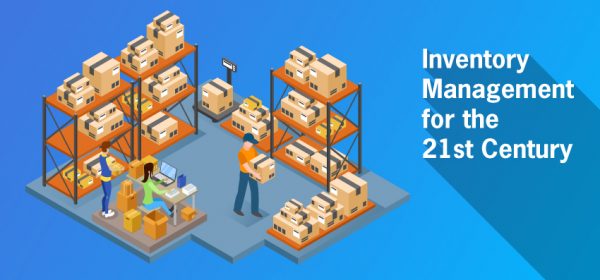It’s a common misconception that you must have extraordinary math skills to be good at commerce. Therefore, it is natural for people who aren’t that good at math to over-compensate for it. Which they do by spending hours at a stretch, checking and rechecking the inventory for any miscounting or miscalculation.
But there’s good news! You can now stop giving yourself a headache over this and countless other problems of inventory management by using appropriate software applications. Unless you are a hobbyist fidgeting around with your pen and paper, you absolutely need to start using these tools.
These are primarily available in the form of extensions to popular e-commerce platforms and your developer can easily integrate it with your e-commerce website. The extensions simplify the management of all the processes involved from managing stocks to suppliers and warehouses.
This is an obvious choice of add-ons, especially when you run an e-commerce store on platforms such as Magento. Magento inventory management leads to a seamless operation if you have the right tools that offer all the basic functions that you might need.
Let us look at the basic problems of inventory management in Magento and how you may overcome or eliminate them using a Magento inventory management software.
Centralization
There are countless areas of business that technology has affected. Inventory management is one of them. The software has made the use of spreadsheets, reports, and order logs obsolete. And there’s a reason behind it.
Inventory management is a complex process. Particularly for e-commerce businesses. The goods pass from the manufacturer to the consumer through various channels. As the size of the operation increases, so does the complexity.
To make sure everyone is on the same page, it is important to have centralized information. The real-time updates help in avoiding confusion and miscommunication. It is equally important to compartmentalize the information and provide the relevant bits to the concerned parties.
No one likes paperwork. When you store your information digitally, you can easily track, analyze, and control it.
Over or Under-Stocking
One of the most challenging tasks in inventory management is determining how much stock you need to keep. You keep too less and you’ll have to cancel orders, leading to unhappy customers. You keep too much and it will hold you back financially. Moreover, in the case of perishable goods, this could be a source of major losses.
And one might think that he has overcome this challenge once he figures out the sweet spot. However, if you’re a growing company, this number will increase and you’ll have to figure out by what factor it’s increasing.
Even in established companies where this average is more or less constant, there might be a change in demand depending on factors such as seasons, upcoming festivals, etc.
However, you can estimate the demand if you have all the information organized and handy. Data of the past sales records and trends will help you get a fair idea of the different factors that affect the demand for a certain product.
Ideally, you should have a benchmark for the sales in best and worst-case scenarios. You need to know the minimum stock you must maintain and how long it takes for the stock to reach you. A Magento inventory management software lets you automate this to a certain extent. It is also important that you reassess these factors periodically as they may change over time.
What’s next?
Inventory management is a crucial part of any trade. It has developed from pen and paper records to complex software. The latest development in inventory management is the advent of inventory management apps.
A mobile inventory management tool has the flexibility that’s typical of mobile apps. At the same time, it doesn’t compromise on the functionality. The adoption of these applications has led to optimized supply chain management.
This transition is an important part of commerce moving to the internet. Several e-commerce platforms have emerged in the last decade such as Magento, WooCommerce, and Shopify. They have made it easier than it’s ever been for a merchant to operate a business remotely.
This makes it necessary for inventory management software to catch up. They do this by providing real-time updates about your stocks. They also let you manage it remotely and with minimal intervention.
Conclusion:
The first thing you could do to injure your business is to adopt poor inventory management practices such as using spreadsheets where they clearly wouldn’t work. Manually tracking and updating your sheets can lead to human error. Which in turn leads to a mess.
It has become common practice for businesses from SMEs to Giants to use inventory management software. Anyone selling anything will undoubtedly adopt this practice sooner or later. So, why not start today and make the most of it?
The advantage early adopters have is that there’s ample time for the involved parties to adapt to the change. This relieves the teams from the pressure of learning to use new software and lets the adoption process take its natural course.
Our Recommendation:
MageMob Inventory for Magento is among the great tools for inventory management. It gives you access to your inventory log from your desktop as well as mobile. Also known for its minimalistic option among all the inventory management software, it is easy to adopt and cost-effective.
All product and company names are trademarks™, registered® or copyright© trademarks of their respective holders. Use of them does not imply any affiliation with or endorsement by them.





